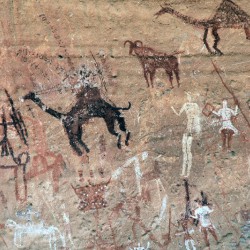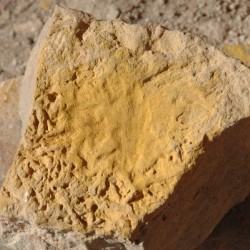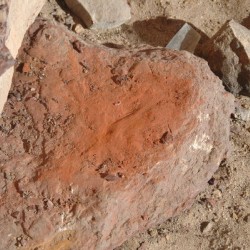Cave Dwellers
Troglodytes or Cave Dwellers: way of living in the Sahara, mentioned by several ancient authors.

In the sixth century BCE, the Carthaginian sailor Hanno explored the west coast of Africa and met the Lixites, who lived in a fertile part of Morocco's east coast. Here was the beginning of a trade route that led through the Sahara, and the Lixites told Hanno that beyond the mountains was the land of strange kind of people, "cave men who run faster than horses".note A century later, the Greek researcher Herodotus of Halicarnassus offers similar information: he tells that "the Garamantes use four-horse chariots, to hunt the cave-dwelling Ethiopians, who are the swiftest of foot of all men".note
Both authors seem to refer to cave-like abris in the desert, which have been identified by archaeologists. The people living over there may have been nomads who stayed in these caves temporarily, because they could find some water in the shade, and might even procure some food. There must have been some plants and an occasional tree, especially in the shade. Bees have also been attested: their nests can still be seen.
The Greek geographer Strabo offers a description of the Troglodyte life style.note The Troglodytes (cave dwellers) were living in clans, had their wives in common, could go to war with other clans about pasturage, fighting with clubs, spears, and bows. They wore skins, lived on a diet of meat, and buried their dead under heaps of stones. In short, they were stone age pastoralists.
We might add that they were also artists, responsible for the art of the Period of the Horse and the Period of the Dromedary.
 Wadi Imla, Dromedaries and hunters |
 Wadi Awis, Yellow pigment |
 Wadi Awis, Red pigment |
 Wadi Awis, Bees' nest |